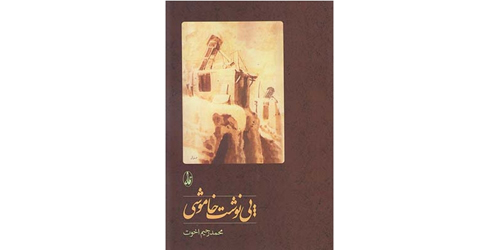
- Author: Mohammad-Rahim Okhovat
- Publisher: Agah Pub, Persian
- Publication Date: 2016 (1395)
- 148 pages
From the Book
This little space gradually grew large and larger until it occupied his whole heart and mind. An all-inclusive mass that, in spite of all his expertise and experience, was unnameable for him. It was not love, or friendship, or pity; rather like addiction. An odd amalgamation of all the things named and unnamed that could glue two persons together and take their liberty and ambulation. Like an encumbrance, but not exactly an encumbrance. He started thus to think – it had nothing to do with love, or pain, or lonesomeness, or what unfaithful lovers did. It only taught him a lesson that no matter how devout and intimate people are, there are often latent layers of being in them which they might not even be aware of. How is it possible then for a person, who hardly knows himself, to initiate an everlasting and multilateral matrimonial life with another one?
About the Book
‘Postscript to Silence’ is an account of the life of a septuagenarian who monotonous life is interrupted with the presence of a thirty-some year-old girl. Her presence inspires the old man to explore his memories back to the time of love, his travel to Kurdistan and Kavir, and refuge from loneliness to family gatherings and teaching. Back to the present: A girl, an old student, brings her novel for the old man to edit for her, but the novel is concerned with his past life with her. Back to the past: when the man’s mother was the only appealing female character in his life. The story moves on to a moment of suspension between the past and the present with an interesting intertextual relation with another novel of the author, “Beholding”.
The narrative relies mainly on the psychology of character and morphology of situations set on broken and intervening timelines. The mode of suspense that Okhovat has created in his narrative is themed on the invisibility of time. The story begins with a third-person point of view that is gradually lost into the voice of an unknown narrator, and finally fades into an omniscient point of view through which the reader experiences a sense of revelation.
At age forty, the man’s life is tied with travel. The concepts of border and freedom are interwoven in poeticity of a lover devoid of a beloved. Women for him are mere sources of inspiration and his episodic poems addressed to them are to explore the concepts of devotion and dependence.
The main motif of the story is a sense of approaching death which paradoxically causes both fear and hope in him. There is some home in his hopelessness that enables him to speak up, explore his childhood personality and finally come up with a definition of love and devotion.
Okhovat is a master of playing with the rules of storytelling and the final chapter of his book in fact serves as a dissection of his own novel. As is the case with dissection, the story is no more than a corpse. How about its author?
About Mohammad-Rahim Okhovat
Mohammad-Rahim Okhovat was born to a religious family in Mohammad-Abad district of Isfahan in 1945. He started writing as early as his teen years and is best-known for his writings in Ferdowsi Magazine during the 1960s. His first book ‘Suspension’ was published in 1999, yet he owes his success to his novel ‘Names and Shadows’. In an interview, Okhovat has called this novel a postscript to his own writing career, simply declaring his retirement.


Leave a Reply